Culver Academies Golf Course
A frontrunner for the best nine-hole course in the world, Culver was born from a golf boom in the Roaring '20s, features incredible greens, and asks for every shot in the bag.

Culver, Indiana, USA
William Langford and Theodore Moreau (original design, 1924), Bobby Weed (restoration, 2015)
Private
The prestigious and historic Culver Academies has been renowned for its high level of youth education as well as excellence in athletics since 1894. This initial drive for success in its athletic endeavors coincided with a golf boom in the roaring ‘20s, when the desire for a high-quality golf course for the cadets brought William Langford and Theodore Moreau to rural Indiana. At the time, the duo was the most prominent among golf architects in the Midwest, and they were tasked with laying out 27 holes across Culver’s lakeside property. The school assigned them to build the nine best holes from their 27-hole plan, leaving the remaining 18 to be built at a later time. Unfortunately, the Great Depression destroyed the prospect of the final 18. In return, Culver has, without a doubt, one of the best nine-hole golf courses in the country, if not the world.
The nine-hole course is made up of Nos. 10, 11, 8, 9, 1, 2, 16, 17, and 18 from the 27-hole plan. In 2006, Ran Morrissett of Golf Club Atlas visited the course and quickly realized he had stumbled upon something with the potential of immense greatness. The original Langford and Moreau features were just lying there on the ground, but improperly presented. Greens were round ovals detached from the grassed-over bunkers. Trees had become overgrown and crowded the golf holes, which prevented ideal playing conditions. Combined efforts between Ran, Bobby Weed, Chris Monti, Tom Mead, and several alumni illuminated to the academy that they had something truly special yet unrealized. A preparatory school that strives for excellence in all facets wasn’t going to let this go by the wayside. The expansion of greens and fairways, removal of undesirable trees, restoration of grassed-over sand bunkers, leveling of tees, installation of irrigation, and commitment to proper maintenance quickly became a reality. Money was budgeted for an official superintendent, something that hadn’t existed in many years, and Michael Vessley helped finish off the restoration with Weed.
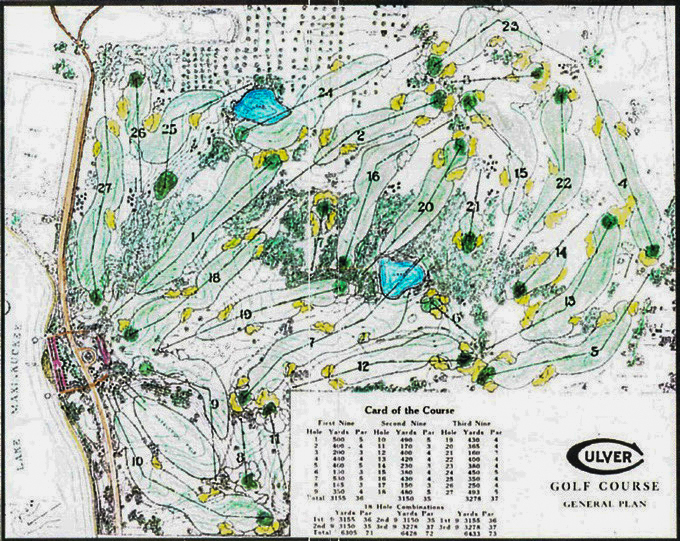
Today, the course is fully realized and restored to a 1939 aerial. Vessley, along with instrumental guidance from Brian Schneider, has continuously poured his time and effort into expanding the course further and incrementally making improvements with his four-man crew. The nine-hole course sits on heaving glacial landforms just a few hundred yards from Lake Maxinkuckee. Incidentally, the “nine best holes” selected by L&M came out to three par 3s, three par 4s, and three par 5s, all very different from one another. The variance is spectacular and leaves you eager to see what’s coming next. The internal contouring of all nine putting surfaces is simply extraordinary and unlike anything I’ve seen elsewhere. Culver is truly a piece of untouched golf history that deserves the highest regard in golf design and originality.
Take Note…
Magnetic attraction. Culver has a long history of attracting notable golfers. Professionals like Walter Hagen and Byron Nelson have played exhibition matches at the academy. Additionally, when Mike Keiser, founder of Bandon Dunes, heard claims of it being the “best nine-hole course in the country,” he had to see for himself as his own course, The Dunes Club, had received similar praise. Former Secretary of State Condoleezza Rice has made a visit to see the course as well as countless golf writers, historians, and superintendents.
Down the road. A few interesting courses sit in close proximity to Culver’s golf course. Maxinkuckee Country Club is another Langford & Moreau design with large, heaving steam-shovel-built landforms. In addition, Horseshoe Farms, an ultra-private club owned by late Indianapolis Colts owner Jim Irsay, was built by Pete and Alice Dye in 1998. Originally public and named Mystic Hills, the course now claims to be “the longest golf course in the world,” topping out at 8,135 yards.
{{culver-about-gallery}}
Overall Thoughts
Culver’s golf course has benefited greatly from neglect as well as thoughtful stewardship. A paradox? Yes, but one that is often a sign of greatness when referring to golf courses of the Golden Age.
The neglect began during World War II. Bunkers were grassed over to reduce maintenance and careful considerations were abandoned. The greens shrunk in size dramatically, over 50 percent in most cases. Trees were left untouched, allowing them to encroach on the original golfing corridors set by Langford and Moreau. By the 2000s, the course was still stuck in the past, but not the glorified 1920s. A skeleton-like shell of what was once attracting the likes of Hagen and Nelson was left. Luckily, this type of neglect presented the perfect opportunity for restoration to reclaim what once was because it hadn’t gone anywhere. It was just sitting there in a decrepit state.
This is where passionate custodians and golf lovers enter the story. Bobby Weed and his associates revived the course by doing the heavy lifting and breathing new life into it. There was only one bunker on the golf course for much of its modern life, but the original design had nearly 40. The fairways and greens had shrunk to a fraction of their initial size, creating disparity between the golf features and the broad landscape. This was all fixed when the academy realized what great potential their course had. The story gets even better with the entrance of Michael Vessley, an Indiana native who was hired to be the superintendent midway through the Weed restoration.
Overall Thoughts
Culver’s golf course has benefited greatly from neglect as well as thoughtful stewardship. A paradox? Yes, but one that is often a sign of greatness when referring to golf courses of the Golden Age.
The neglect began during World War II. Bunkers were grassed over to reduce maintenance and careful considerations were abandoned. The greens shrunk in size dramatically, over 50 percent in most cases. Trees were left untouched, allowing them to encroach on the original golfing corridors set by Langford and Moreau. By the 2000s, the course was still stuck in the past, but not the glorified 1920s. A skeleton-like shell of what was once attracting the likes of Hagen and Nelson was left. Luckily, this type of neglect presented the perfect opportunity for restoration to reclaim what once was because it hadn’t gone anywhere. It was just sitting there in a decrepit state.
This is where passionate custodians and golf lovers enter the story. Bobby Weed and his associates revived the course by doing the heavy lifting and breathing new life into it. There was only one bunker on the golf course for much of its modern life, but the original design had nearly 40. The fairways and greens had shrunk to a fraction of their initial size, creating disparity between the golf features and the broad landscape. This was all fixed when the academy realized what great potential their course had. The story gets even better with the entrance of Michael Vessley, an Indiana native who was hired to be the superintendent midway through the Weed restoration.
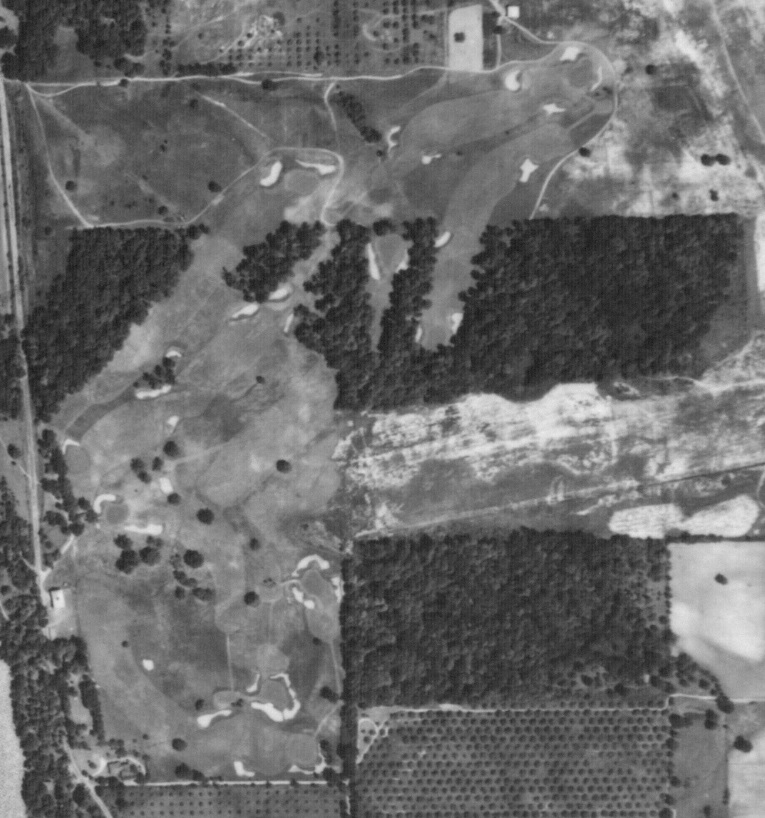
Vessley is thoughtful, inquisitive, and kind, which immediately becomes apparent when you talk to him about Culver’s golf course. These humanistic qualities actually reveal themselves in the presentation of the golf course as well, but we’ll get to that shortly. Over his tenure he has consistently made improvements, scoured the history, consulted experts, and poured his heart and soul into this wonderful golf course. He’s certainly entranced by this relic of a design, and rightfully so. Seeing the transformations that Weed made initially and the tender love and care that Vessley and Brian Schneider continue to administer is heartwarming for a lover of classical golf courses.
What makes Culver so great is its variety in design as well as its maximized presentation. For starters, the routing traverses the land intelligently, alternating between downhill and uphill throughout. In addition, the holes are stretched across landforms that create strategic interest. The first fairway has a reverse camber, the fourth hooks around a deep canyon-like landform, and the roller coaster ninth provides several routes to the green. This utilization of the land, paired with the 3-3-3 par configuration, stimulates the golfer from Nos. 1-9, and we’ve barely even touched on the immaculate green complexes!
Culver's greens are special. Their unaltered form is seemingly irreplicable in the modern age. The character and complexity of all nine greens is fascinating and frankly mind-blowing. There are pockets, knobs, plateaus, and perimeter rolls that create multiple interesting hole locations on every green. Thanks to Michael and Brian, the far edges of each green have been reclaimed, making a dramatic difference in appearance and playability. Taking on certain pins has real consequences, too, with the edges of greens draped over the far extents of the green pads.
One thing you’ll notice about the current form of the course is the endless shortgrass. Vessley has pushed the fairway and green surrounds mow lines so wide that he actually mentioned, “I think we went too far in some spots.” This willingness to press the boundary is admirable and allows Culver to continually improve its presentation, optionality, and playability. This makes holes like Nos. 1, 4, 5, and 9 very dynamic because the shortgrass now covers slopes that allow you to play the ball on the ground and watch it feed onto the green. Or in several cases, it allows you to target aggressive landing areas for improved angles or seek more generous locations that reduce penalties. Talk about #WidthAndAngles.
Through and through, Culver is a unicorn; AKA a legendary creature. It was essentially in a dormant state for several decades. Thanks to Weed, Vessley, and Schneider, the Langford and Moreau masterpiece lives again.
3 Eggs
Culver is certainly a frontrunner for the best nine-hole course in the world. The stewardship over the last 10-plus years has left no stone unturned. There’s not much of anything that needs to be improved outside of minimal tree removal and optimizing how to maintain the bold L&M slopes. The course has nine incredible greens and asks for every shot in the bag. What more could you ask for?
Course Tour

No. 1, par 5, 507 yards
The opening drive starts high above a chasm and wet marshland. Strong shots will crest the apex of the hill and afford a flatter lie. The blind approach to the sunken green is a joy to play, as all of the land dives down towards the green, promoting the ground game.
{{culver-first-hole-gallery}}
Favorite Hole
No. 2, par 3, 178 yards
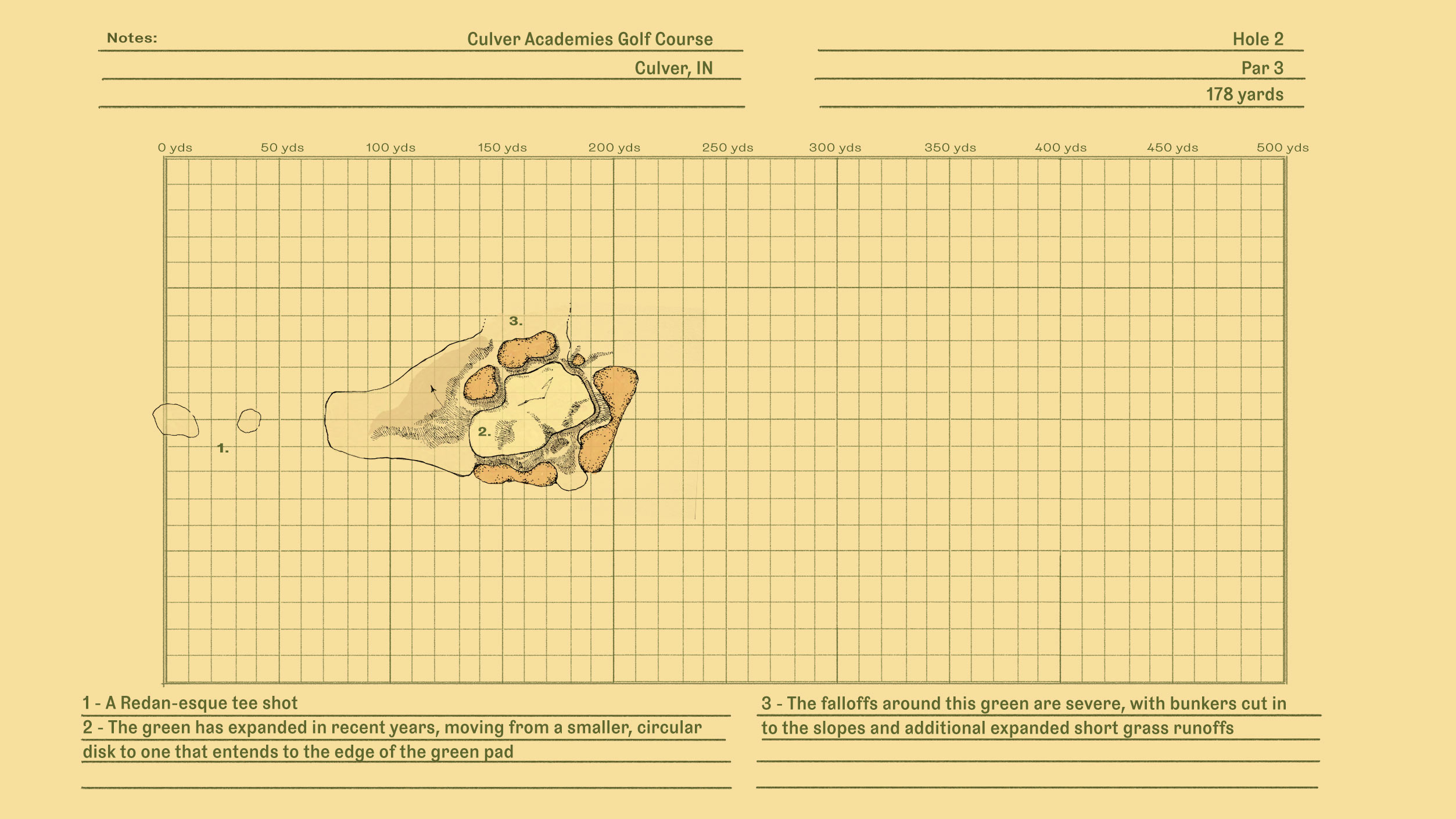
After the rollicking first, the second plays back uphill to one of the most complex greens on the course. The internal contouring on this green, as well as the eight others, has to be seen to be believed. There’s simply no other greens I could possibly compare to.
One thing that is comparable in this hole is the Redan-like qualities. The large shoulder front right of the green allows for shots to funnel onto the putting surface from right to left. A central knob can divert balls to the back right corner or back left corner, depending on how the ball enters the surface. The hole certainly has a resemblance to the seventh at Chicago Golf Club – built just prior to Culver – and makes me wonder if the Chicago-based team had seen what Seth Raynor did in Wheaton prior to building the second at Culver. This green has been expanded to the max, allowing for a myriad of epic pin positions and optionality. Unambiguously, a first-class par 3.
{{culver-second-hole-gallery}}
No. 3, par 3, 174 yards
While similar yardage to the second, the third plays straight back down the hill, meaning a different club is typically needed. The green’s back left section dips down, creating a unique high front plateau and lower back section. Precision is key here.
Images from Ran Morrissett’s initial visit in 2006, subsequent visit in 2016, and current form really highlight the transformational jump from pre-restoration to post, and then the incremental enhancements from Vessley and Schneider expanding the putting surface and shortgrass to the limits. Be sure to swipe to the last image.
{{culver-third-hole-gallery}}
No. 4, par 4, 369 yards
The fourth is arguably the “best” hole on the course. The hooking fairway taunts players to bite off as much as they can chew. Ample room to the right allows for a safer play off the tee and a more level lie. The right-hander hook lies on the left side of the fairway bring in the formidable 10-foot fall to the left of the green. The green is like a wave pool with tons of internal movement.
{{culver-fourth-hole-gallery}}
No. 5, par 5, 491 yards
Playing up and over a steep hill, the fifth transports you into the forested section of the course. Elevated approach shots are thrilling to this gargantuan, 25,000 square foot green sitting down in a bowl.
{{culver-fifth-hole-gallery}}
No. 6, par 4, 440 yards
A very friendly fairway gives advantage to those who hug the right side. This position allows you to play an approach shot straight through the middle of two large mounds on the front of the green. This is likely the most heavily undulating putting surface.
{{culver-sixth-hole-gallery}}
No. 7, par 4, 419 yards
A mirror to the sixth, the seventh promotes a draw off the tee. The elevated green repels balls off both sides. The contours are more potato chip-like on this hole with less internal contours than the rest. A fine hole nonetheless.
{{culver-seventh-hole-gallery}}
No. 8, par 3, 169 yards
The eighth is encapsulated by trees, giving it an independent feel. What’s not different is its spectacle of a green. A C-shaped channel snakes from back right to middle left and presumably drains the water off the green. The raised front portion creates a slightly obscured view from the tee, adding to the uneasiness the deep bunkers on either side provide.
{{culver-eighth-hole-gallery}}
No. 9, par 5, 481 yards
The uphill, fully blind drive is just the start of this incredibly fun golf hole. Once you crest the hill, you emerge out of the trees and are gifted a sweeping view of the expansive shared fairway and white pillar golf house. The approach shot is one of the most exhilarating as shots that carry the large bunker and knob on the left can kick 70-plus yards down onto the green. This putting surface has been expanded over three times its shrunken size.
{{culver-ninth-hole-gallery}}
Leave a comment or start a discussion
Get full access to exclusive benefits from Fried Egg Golf
- Member-only content
- Community discussions forums
- Member-only experiences and early access to events
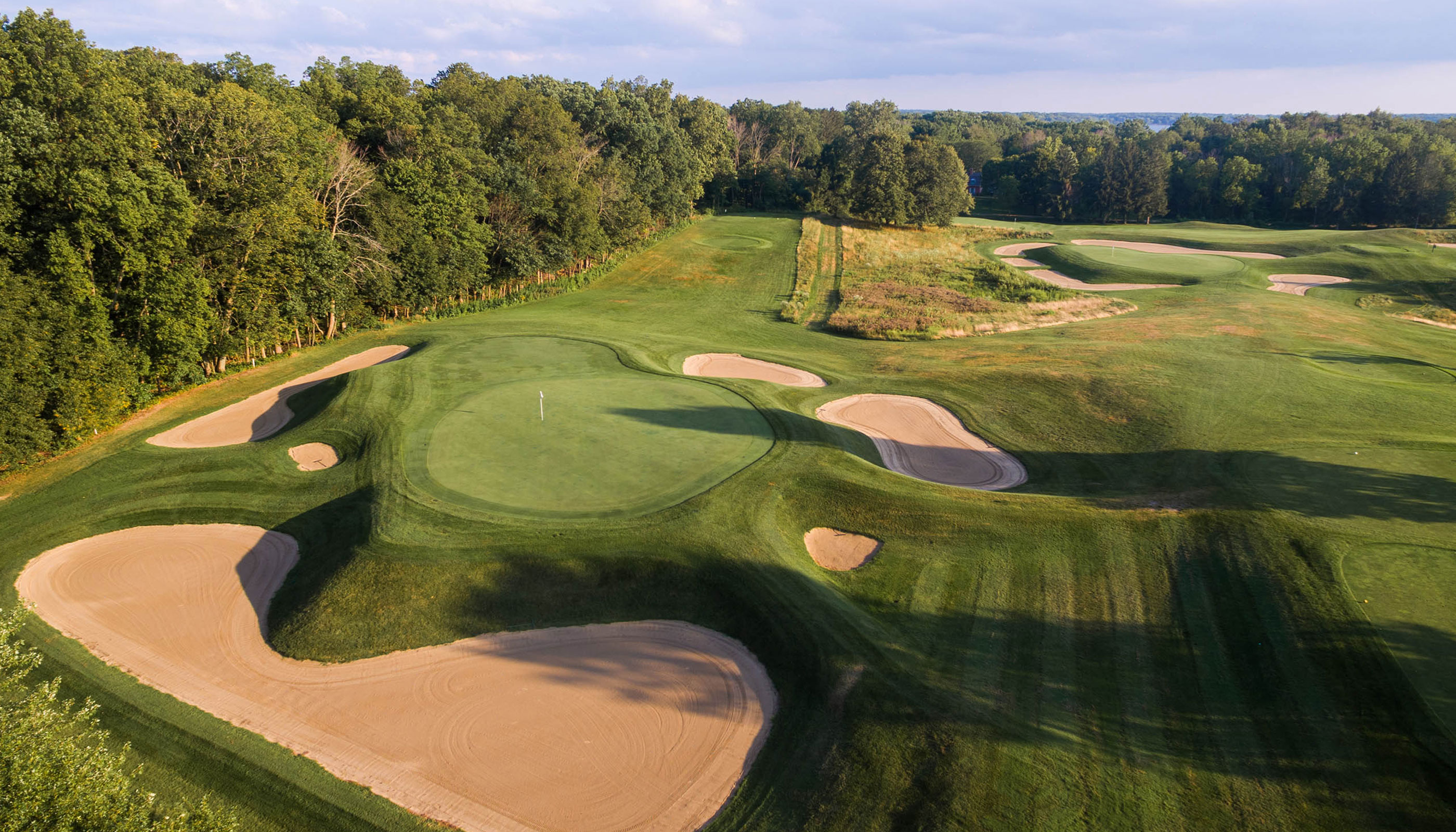

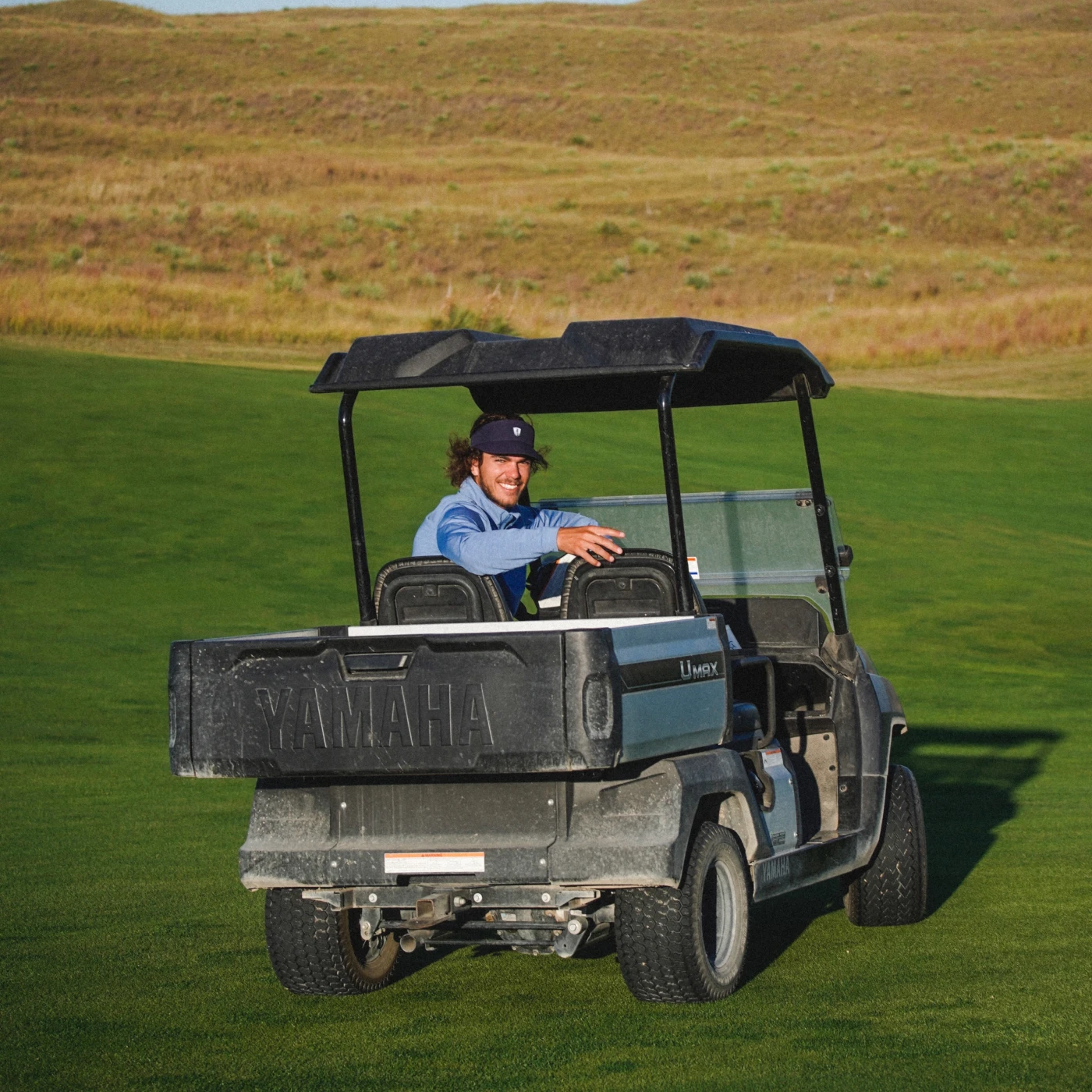

Leave a comment or start a discussion
Lorem ipsum dolor sit amet, consectetur adipiscing elit. Suspendisse varius enim in eros elementum tristique. Duis cursus, mi quis viverra ornare, eros dolor interdum nulla, ut commodo diam libero vitae erat. Aenean faucibus nibh et justo cursus id rutrum lorem imperdiet. Nunc ut sem vitae risus tristique posuere. uis cursus, mi quis viverra ornare, eros dolor interdum nulla, ut commodo diam libero vitae erat. Aenean faucibus nibh et justo cursus id rutrum lorem imperdiet. Nunc ut sem vitae risus tristique posuere.